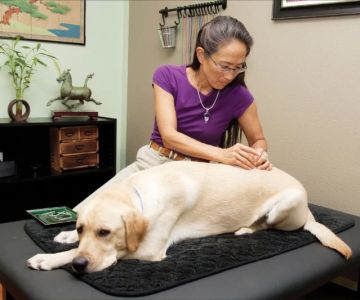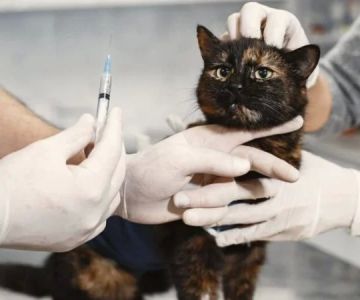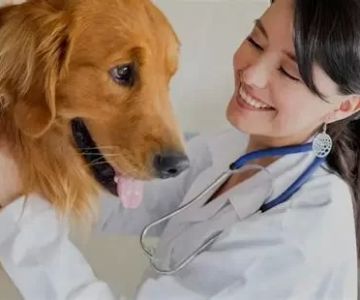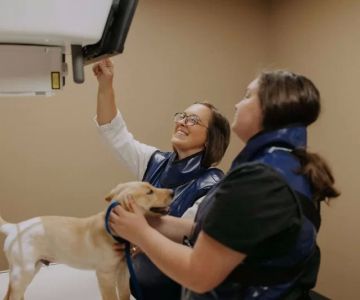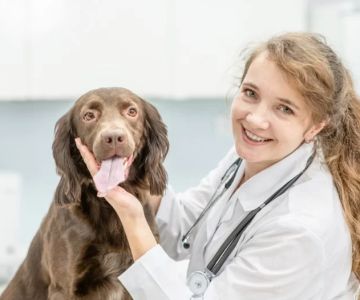What Is Para-Veterinary? An Introduction to Careers in Animal Care
As someone who has spent a considerable amount of time working with animals, I can tell you that the veterinary world is much larger than the common perception of just veterinarians. There’s a whole other side of the veterinary profession that plays a critical role in animal care, known as para-veterinary professionals. You may have heard of them in passing, but what exactly do para-veterinary workers do, and how do they contribute to the veterinary field?
Para-veterinary careers encompass various support roles in animal care that do not require a full veterinary degree. These professionals work alongside veterinarians, providing critical assistance to ensure animals receive the best possible care. From veterinary technicians to animal care assistants, para-veterinary roles are diverse and essential for the success of a veterinary clinic or animal care facility.
1. Types of Para-Veterinary Careers
The para-veterinary field includes a range of careers that require different levels of training and expertise. Some of these roles are highly technical and require specialized education, while others may involve hands-on care and support. Below, I’ll outline the most common para-veterinary roles and what each position entails.
1.1. Veterinary Technicians
Veterinary technicians (vet techs) are one of the most well-known and essential roles within the para-veterinary field. These professionals assist veterinarians in diagnosing and treating animals, performing laboratory tests, administering anesthesia, and providing critical care. Veterinary technicians often work in various settings, including private practices, animal hospitals, research labs, and even zoos.
To become a veterinary technician, one typically needs to complete an accredited veterinary technology program and pass a licensing exam. In my experience, this role is incredibly rewarding as it offers both technical work and direct interaction with animals. Veterinary technicians often form strong bonds with both their animal patients and the pet owners they assist.
1.2. Veterinary Technologists
Veterinary technologists are similar to veterinary technicians, but they tend to have a higher level of education. They often hold a bachelor’s degree in veterinary technology, which equips them with more advanced knowledge and skills. In addition to assisting with medical procedures, veterinary technologists may also conduct more specialized diagnostic tests, oversee the work of veterinary technicians, and manage laboratory operations.
This role typically requires a more in-depth understanding of animal health and advanced medical procedures. Veterinary technologists may also be involved in research or teaching in academic settings, expanding their influence in both the veterinary and scientific communities.
1.3. Animal Care Assistants
Animal care assistants or animal care attendants play a vital role in helping with the day-to-day care of animals in veterinary clinics, shelters, and rescue organizations. They are responsible for feeding, cleaning, and exercising animals, as well as assisting with routine veterinary tasks such as taking temperatures or cleaning wounds. This is a hands-on role that requires a genuine passion for animals and a strong work ethic.
While formal education is not always necessary to become an animal care assistant, many employers prefer candidates with a high school diploma or equivalent and some experience in animal care. I’ve seen many animal care assistants grow within their roles and eventually pursue more advanced positions in the veterinary field.
1.4. Veterinary Assistants
Veterinary assistants support veterinarians and veterinary technicians in a wide variety of tasks. They may assist during surgeries, help in diagnostics, prepare medications, or ensure that equipment is sterilized and ready for use. Although they do not have the same level of education as technicians or technologists, veterinary assistants play a crucial role in maintaining the clinic’s operations and providing support to the medical team.
Becoming a veterinary assistant typically involves on-the-job training, and many professionals in this role choose to pursue additional certifications or formal education to expand their skills and career opportunities. If you're just starting out in the animal care field, working as a veterinary assistant can be an excellent stepping stone toward a career in veterinary technology or animal care management.
2. Training and Education for Para-Veterinary Careers
When it comes to para-veterinary roles, the level of education and training required can vary greatly depending on the specific position. Some roles, like veterinary assistants, require less formal education, while others, like veterinary technicians and technologists, require specialized training and certification.
2.1. Certifications and Licensing
For those aiming to become veterinary technicians or technologists, formal education through an accredited veterinary technology program is essential. These programs typically take 2-4 years to complete and include hands-on training in clinical settings. After completing the program, graduates must pass a licensing exam to become certified veterinary technicians (CVTs) or licensed veterinary technicians (LVTs) in their state.
In addition to national certifications, some states have specific licensing requirements that may involve continuing education to maintain certification. I recommend checking with your state’s regulatory board to understand the specific requirements if you're considering a career in this field.
2.2. On-the-Job Training
For roles like animal care assistants and veterinary assistants, on-the-job training is often the best route to learning. Many clinics and animal care facilities offer training programs for new employees, allowing them to gain hands-on experience while working under the guidance of seasoned professionals. In my experience, these roles provide a great opportunity to build foundational knowledge of animal care before pursuing further education in veterinary technology or other advanced animal care careers.
3. The Role of Para-Veterinary Professionals in Modern Animal Care
As the demand for veterinary care continues to grow, the role of para-veterinary professionals becomes increasingly vital. These professionals provide much-needed support to veterinarians, helping ensure that pets, livestock, and exotic animals receive top-tier care. Without para-veterinary workers, veterinary clinics would struggle to operate efficiently, and many animals might not receive the level of care they deserve.
From assisting with surgeries to managing patient records and performing diagnostic tests, para-veterinary professionals perform a wide range of tasks that are crucial to the smooth functioning of veterinary practices. They often form lasting relationships with animals and their owners, contributing significantly to the emotional and physical well-being of the animals they care for.
4. Real-Life Impact of Para-Veterinary Careers
Let me share a real-life example of how para-veterinary professionals make a difference. A close friend of mine works as a veterinary technician at an animal clinic, and she has been involved in many emergency surgeries and critical care cases. On one particular occasion, a dog came in after being hit by a car. Thanks to my friend's quick thinking and expert care, the dog made a full recovery and was able to return home to its family. This is just one example of how para-veterinary professionals are saving lives and making an impact every day.
It's stories like this that remind us of the importance of para-veterinary roles. These professionals may not always be in the spotlight, but they are crucial to the functioning of veterinary clinics and animal hospitals. They are the unsung heroes who make a real difference in the lives of animals and their owners.




